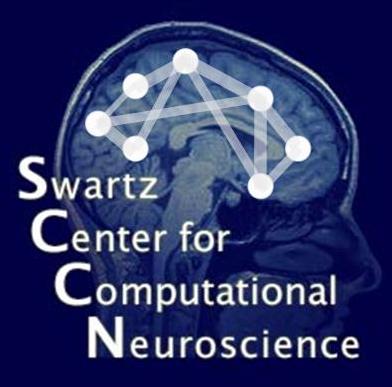Trends in Cognitive Science
May, 2004
|
Makeig S, Debener S, Onton J, Delorme A, "Mining Event-Related Brain Dynamics." Trends in Cognitive Science, 8(5):204-210, 2004. |
A new method for analyzing high-density EEG and/or MEG data uses trial-by-trial visualization and time/frequency analysis to model the event-related dynamics of many cortical areas that contribute distinctive information to the recorded signals.

|
Click on the cover image at left to download the authors' preprint (.pdf, 616k).
Click here to view the online publication. |
This article provides a new, more comprehensive view of event-related brain dynamics founded on an information-based approach to modeling electroencephalographic (EEG) brain dynamics. Most EEG research focuses either on peaks 'evoked' in average event-related potentials (ERPs) or on changes 'induced' in the EEG power spectrum by experimental events. Though these measures are nearly complementary, they do not fully model the event-related dynamics in the data, and cannot isolate the signals of the contributing cortical areas. We propose that many ERP and other EEG features are better viewed as time/frequency perturbations of ongoing field potential processes. The new approach combines independent component analysis (ICA), time/frequency analysis, and trial-by-trial visualization to measure EEG source dynamics without requiring an explicit head model.
